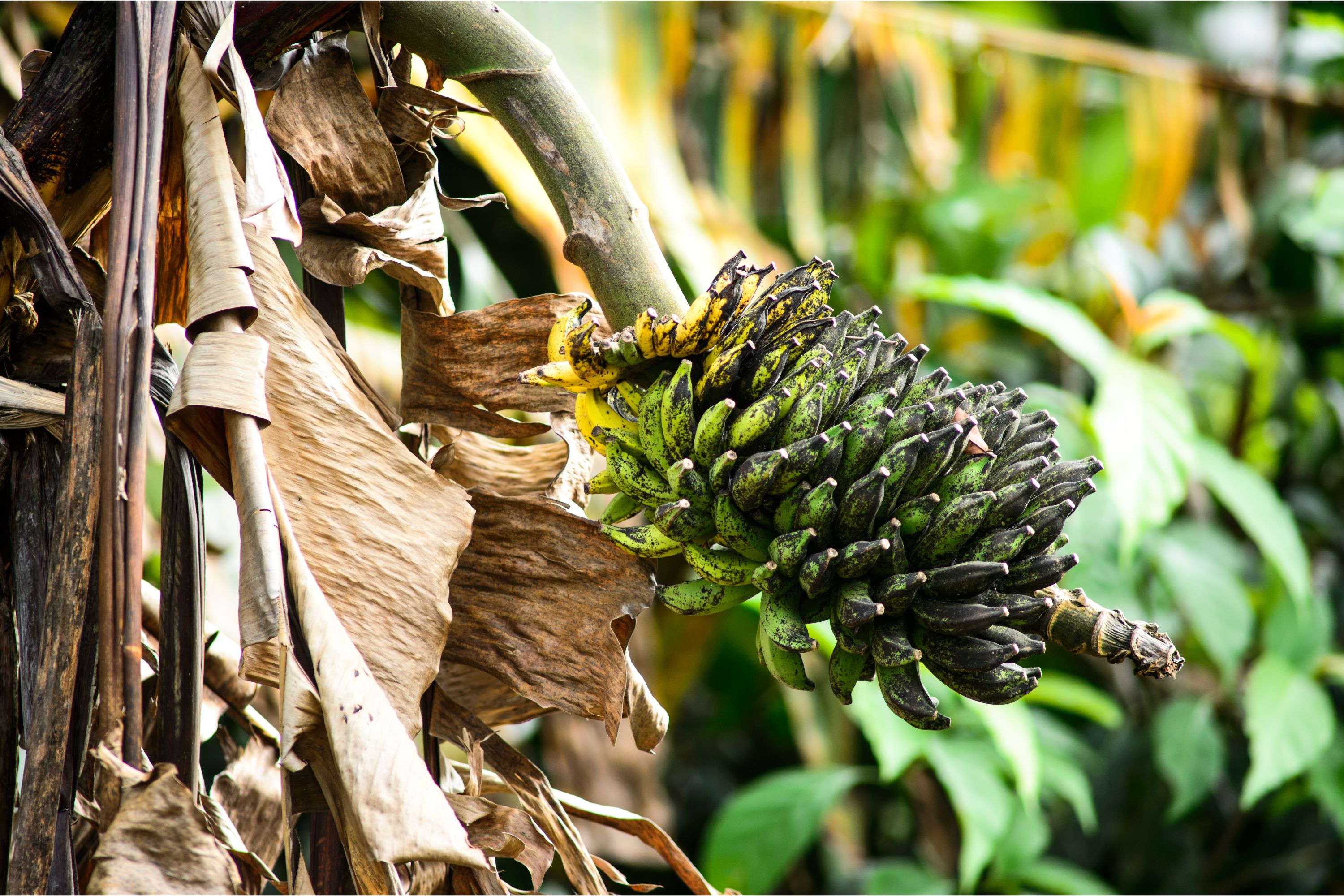Edible Banana
(Musa acuminata)

Description
Musa acuminata is a species of banana native to Southern Asia, its range comprising the Indian Subcontinent and Southeast Asia. Many of the modern edible dessert bananas are from this species, although some are hybrids with Musa balbisiana. First cultivated by humans around 10 kya (8000 BCE), it is one of the early examples of domesticated plants. Musa acuminata is an evergreen perennial, not a tree. The trunk (known as the pseudostem) is made of tightly packed layers of leaf sheaths emerging from completely or partially buried corms. The inflorescence grows horizontally or obliquely from the trunk. The individual flowers are white to yellowish-white in color and are negatively geotropic (that is, growing upwards and away from the ground). Both male and female flowers are present in a single inflorescence. Female flowers are located near the base (and develop into fruit), and the male flowers located at the tipmost top-shaped bud in between leathery bracts. The rather slender fruits are berries, the size of each depends on the number of seeds they contain. Each fruit can have 15 to 62 seeds. Each fruit bunch can have an average of 161.76 ± 60.62 fingers with each finger around 2.4 by 9 cm (1 by 3+1⁄2 in) in size. The seeds of wild Musa acuminata are around 5 to 6 mm (3⁄16 to 1⁄4 in) in diameter. They are subglobose or angular in shape and very hard. The tiny embryo is located at the end of the micropyle. Each seed of Musa acuminata typically produces around four times its size in edible starchy pulp (the parenchyma, the portion of the bananas eaten), around 0.23 cm3 (230 mm3; 0.014 cu in). Wild Musa acuminata is diploid with 2n=2x=22 chromosomes, while cultivated varieties (cultivars) are mostly triploid (2n=3x=33) and parthenocarpic, producing fruit without seeds. The most familiar dessert banana cultivars belong to the Cavendish subgroup. Cultivars have accomplished this desired plant through natural mutations resulting from vegetative multiplication. The ratio of pulp to seeds increases dramatically in "seedless" edible cultivars: the small and largely sterile seeds are now surrounded by 23 times their size in edible pulp. The seeds themselves are reduced to tiny black specks along the central axis of the fruit.
Taxonomic tree:







